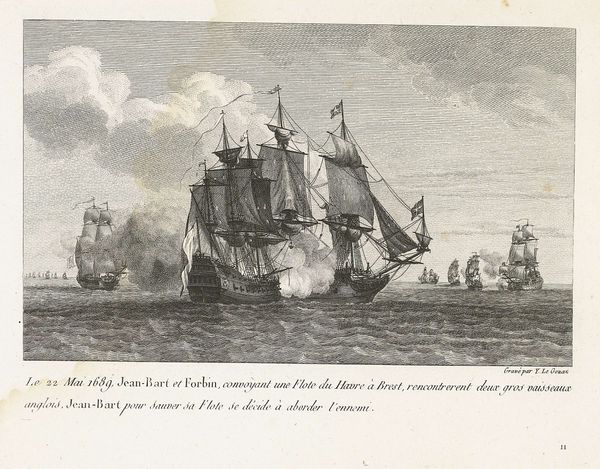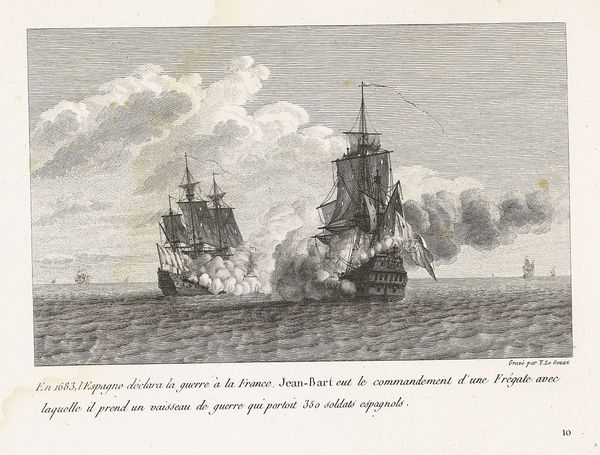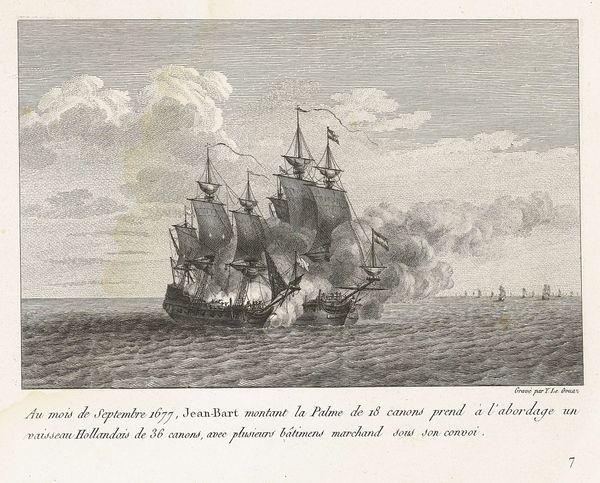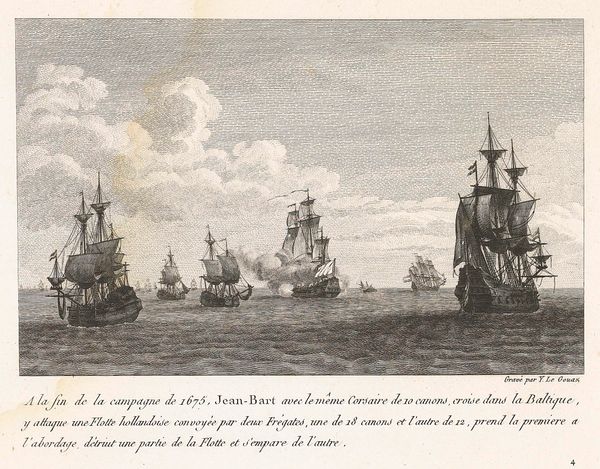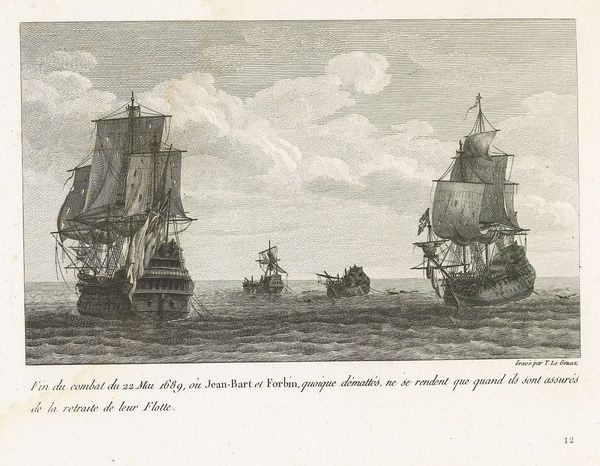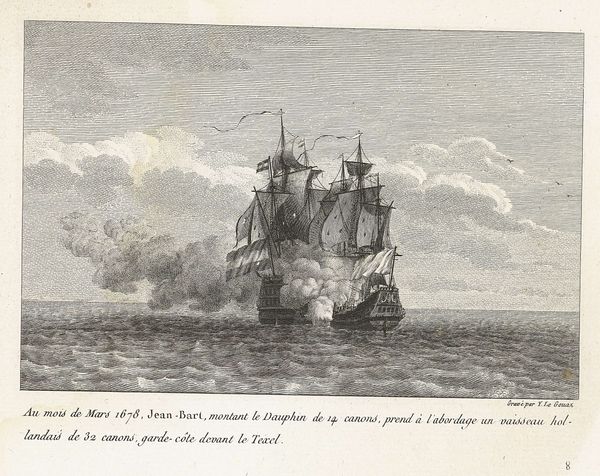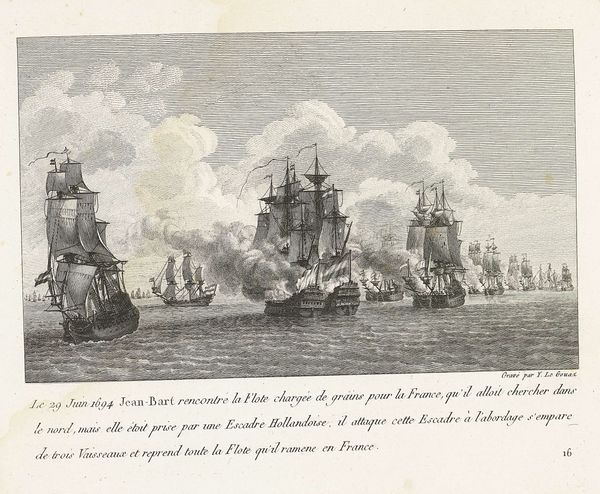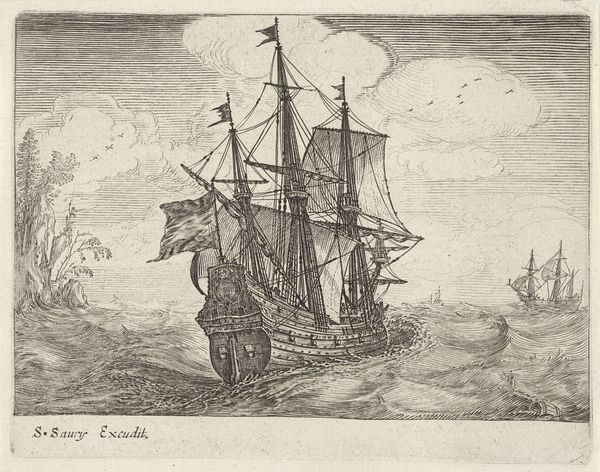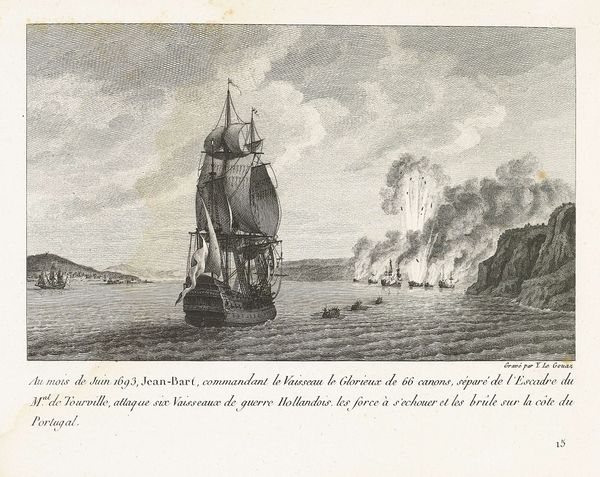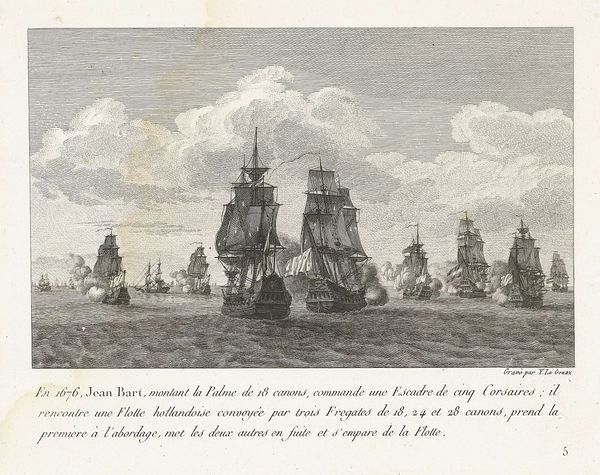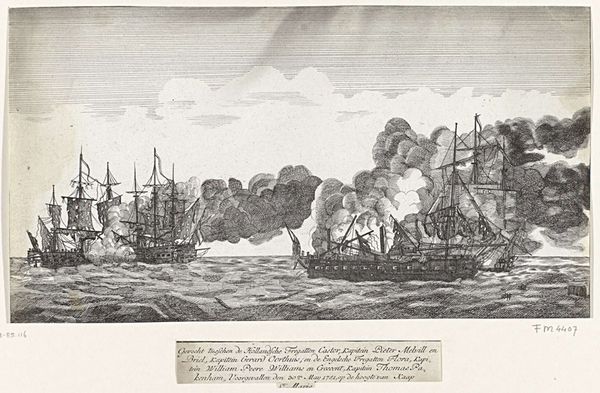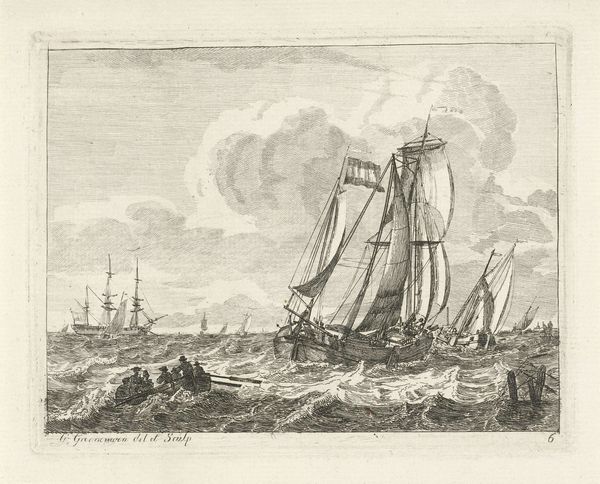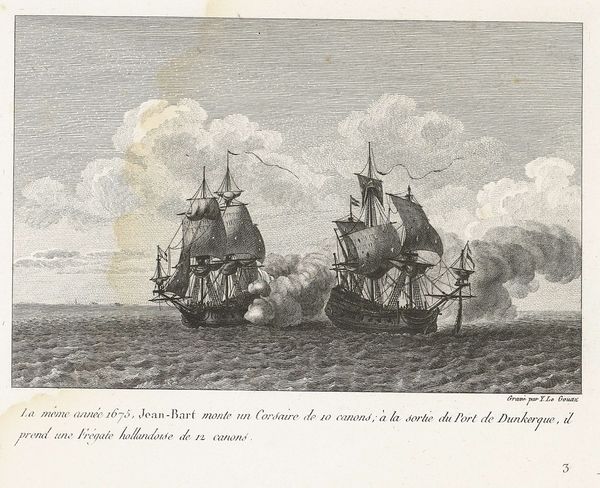
Dimensions: height 180 mm, width 220 mm
Copyright: Rijks Museum: Open Domain
Editor: So, here we have Yves Marie Le Gouaz's "Jan Bart verovert een Hollands fregat bij Texel, 1675," an engraving from 1806, now at the Rijksmuseum. It's quite dramatic! The scene feels incredibly chaotic with the ships battling amidst smoke. How do you interpret this work? Curator: It’s tempting to view this merely as a historical depiction of naval combat. But I think we need to delve deeper into the narrative Le Gouaz is constructing, even retrospectively. Consider the legacy of naval power, especially in the context of 19th century nationalism. Who is Bart? Why highlight this particular victory? Editor: I see your point. It’s not just a simple battle scene. Curator: Precisely! It's about the assertion of dominance, and the symbolic power projected through these maritime clashes. This engraving likely served to bolster national pride in France. Consider its relation to other works celebrating military prowess; are they glorifying violence? Who benefits from that glorification, and what ideological purposes does this serve? Editor: That is interesting, I did not think about the intent behind creating national pride. Curator: Think, too, about the role of printmaking itself. It makes this imagery incredibly accessible, disseminating a carefully constructed view of history to a broad audience. The engraver controls the narrative by what's included – and what is omitted. Is there another side? A counter-narrative? Editor: That’s a great way to look at it. It's making me think about how history is shaped and presented through art. I'm curious to research the legacy of these naval heroes. Curator: Exactly! Always question the dominant narrative and explore the stories lurking beneath the surface. Hopefully this has been a voyage of discovery, prompting us to question power dynamics.
Comments
No comments
Be the first to comment and join the conversation on the ultimate creative platform.
